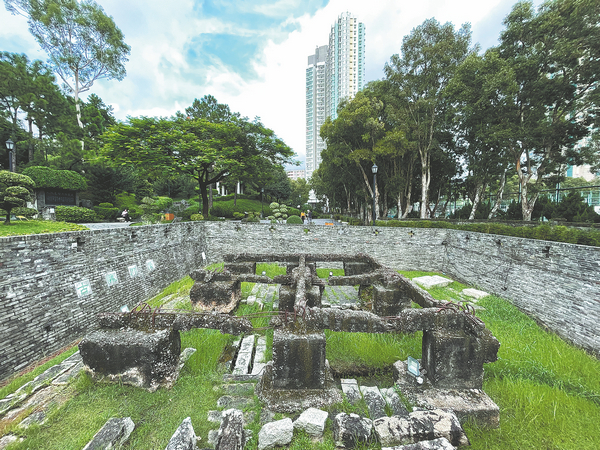

"The history density of the district is really high, which means that many historical events might happen at the same place, as if the history has been piled up layer by layer," Ng says, while guiding a group of tourists.
Ng's metaphor can be best demonstrated by the Kowloon Walled City Park, the starting point of the trail. Before it was turned into a public leisure place in the 1990s, the site, once a military post in the late Qing Dynasty (1644-1911), was heavily populated with more than 50,000 residents on around 2.7 hectares.
From the park, the trail goes through three areas: Kowloon City, To Kwa Wan, and Hung Hom. Ng tells tourists that each of them has its own unique "character".
The self-educated expert is quite knowledgeable about the local history and has the gift of eloquence vital for a good guide.
After his retirement, Ng took a tour-guide training course and then started to present local history to other people. He has also worked at museums and other scenic spots in Hong Kong, but he cares more about his home district, the Kowloon City District.
About five years ago, Ng began to guide citizens and tourists to walk along the "Kowloon City in Transformation" Walking Trail.
Built from the beginning of 2018 to July this year, the trail is an urban renewal project supported by the Urban Renewal Fund of the HKSAR government and operated by the Hong Kong Sheng Kung Hui Welfare Council.
"We encourage people, whether neighbors, citizens from other districts, or even tourists from other cities, to walk along the trail so that they can have a direct perception of the district," says Chan Wing-lam, the project manager.
Not only a route for tourists to roam the city, the trail is more of a platform at which various urban renewal activities have been held.
"Old districts inevitably have to be regenerated," Chan says. "We want to involve more residents to participate in the renewal work, as the place belongs to them all."
Walking along the trail, from time to time, one can see special patterns on some upgraded public infrastructures, such as lamp standards, handrails, benches, tiles, and well lids, among others.
According to Chan, those designs were inspired largely by the experiences and memories of local residents.
So far, based upon the trail project, more than 760 various urban renewal activities, including design workshops, photo contests, guided tours, and story collections, have attracted around 85,000 participants to get to know more about the Kowloon City District.
Ng himself has led more than 100 tours along the trail. As the new fashion of "city walk" has been embraced by an increasing number of youngsters, he welcomes more visitors to follow him to wander in the regenerating Kowloon City District, as if walking from past to present.